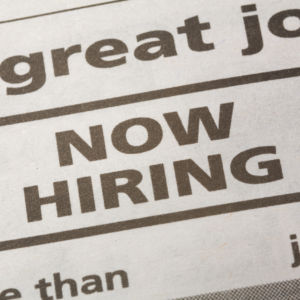The workforce saw a slight increase in employment growth with an additional 98,000 new jobs for the month of March, according to a federal report Friday.
President Donald Trump has overseen steady employment growth since entering office. The positive trend started in the final years of the last administration. The Bureau of Labor Statistics found in its latest jobs report that the trend continued with a slight uptick of 98,000 new jobs.
“Total nonfarm payroll employment edged up by 98,000,” the report stated. “The unemployment rate decreased by 0.2 percentage point to 4.5 percent in March, and the number of unemployed persons declined by 326,000 to 7.2 million. Both measures were down over the year.”
The previous jobs reports over the last year usually saw greater job growth closer to 200,000. The unemployment rates has hovered around 4.5 percent for several months, meaning there are less people in the labor market to fill new positions. There are still plenty of people outside the labor force.
“The job market is in very good shape,” Moody’s economic director Ryan Sweet told InsideSources. “The job market continues to tighten, we continue to move towards full employment, I don’t think we’re there yet, but we’re getting closer. Job growth has been very broad based. There has been findings that manufactures are hiring more aggressively and construction is picking backup.”
Average wages increased by five cents and now sit at $26.14 for the month of March. Wages in recent months have shown slow but positive growth. Professional and business services saw the most significant increase of new jobs at 56,000, followed by mining and healthcare. Retail trade lost jobs.
“I think the job market is in a phenomenal place right now,” Sales Consultants of Grand Rapids recruiter Jordan Underwood told InsideSources. “I think there is a lot of opportunities for growth. We work specifically in sales and managerial roles, and just about every company we’re working with is looking to expand.”
The labor market still faces some significant issues despite the positive trends. The labor force participation rate and underemployment have been problematic since the recession. Underemployment occurs when workers are stuck in part-time positions or can’t find roles that match their training or economic needs.
“There’s still the issue of underemployment,” Sweet said. “That’s one reason I don’t think we’re at full employment yet. There’s still too many people working part time for economic reasons. The number of people who are not in the labor force that want a job is still a little bit elevated.”
The labor force participation rate tracks the number of employed and those actively seeking work as a percentage of the total population. The participation rate has dropped considerably since the last recession and now sits at 63 percent. It has leveled over the last year, but has failed to regain those losses.
“We’ve been improving on both fronts,” Sweet said. “The composition of job growth early on in this expansion has primarily concentrated in low page industries, but that’s normal. That’s your low productivity jobs, they’re the first ones to comeback after a recession.”
Sweet adds that the mix of job growth begins to favor high wage industries as economic expansions age. The current recovery just happened to be very long, so that change hasn’t started happening until just recently. He notes a tighter labor market will cause wages to increase which will further incentive people to enter the workforce.
“Typically as you approach full employment it gets harder for business to find qualified workers so hiring will begin to moderate,” Sweet said. “The bar is low for the job market, we only need to create about a hundred thousand jobs per month to keep up with growth in the working age population.”
American Staffing Association (ASA) predicts similar trends based on what’s happening in staffing employment. The industry has started to see a slowdown when it comes to employment growth. Some sectors like staffing employment can serve as indicators for where the rest of the labor market is going.
“As the economy has slowed down in growth recently, we’ve seen the same thing happening with staffing employment,” ASA research director Cynthia Poole told InsideSources. “Usually about three to six months later you’ll see the same type of trend happening in employment overall.”
The Gross Domestic Product (GDP) last year showed a positive increase after being stuck around one percent. GDP tracks the total dollar value of all goods and services produced over a specific time period. The stock market has shown positive growth as well. Gallup has reported economic confidence has remained around a record high.
Trump has promised to protect domestic workers from unfair foreign competition. He has primarily focused on trade and immigration. Nevertheless, there is concern that too much economic protectionism could cause problems, even for the domestic workers it’s meant to help.
Republicans are hoping to spur economic growth through regulatory and tax reform. They released a blueprint designed to simplify the tax code while also lowering taxes for upper and middle-income earners. Even some supporters of the plan, however, are concerned with provisions like the border adjustment tax.
The jobs report does not include farm workers, private household employees or nonprofits.

